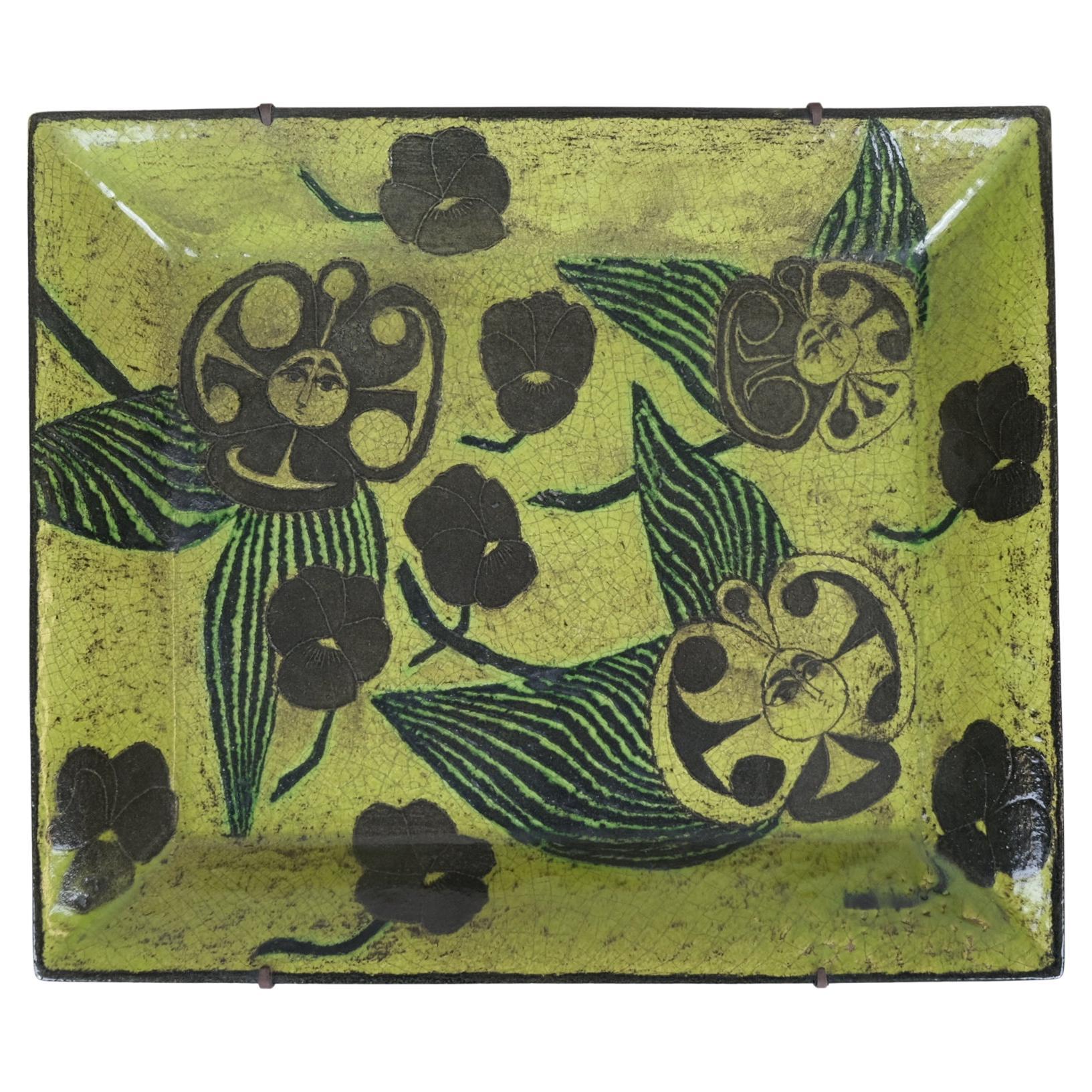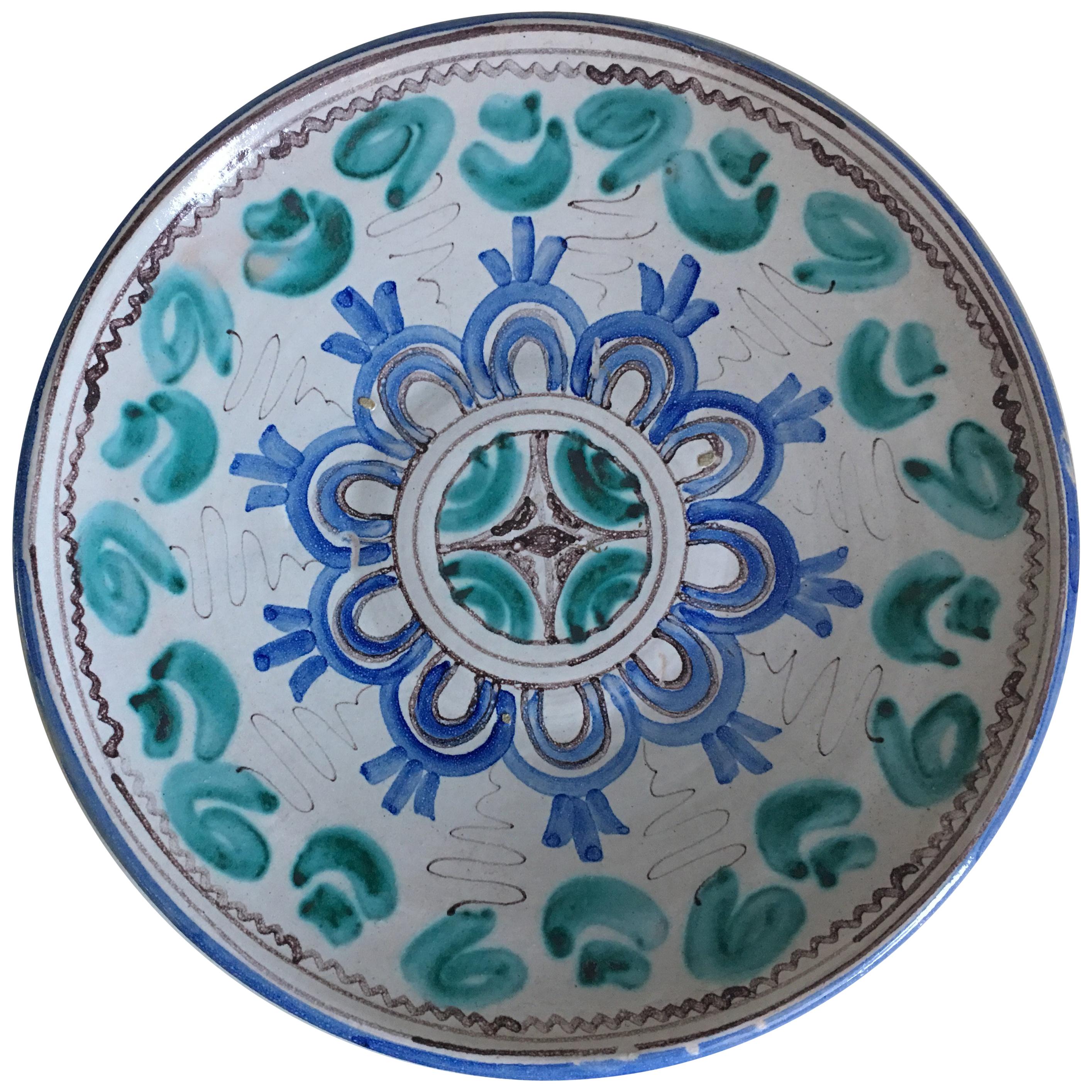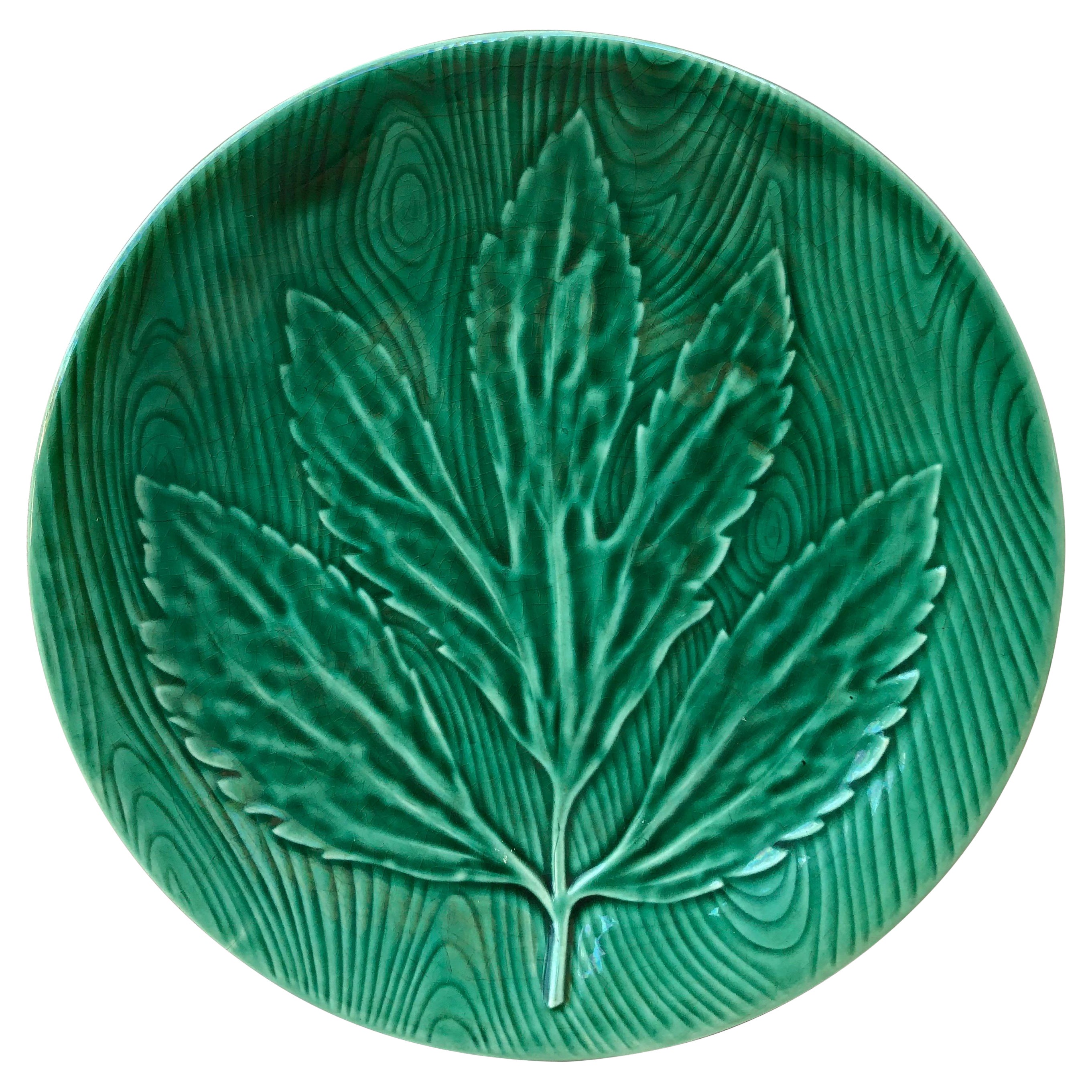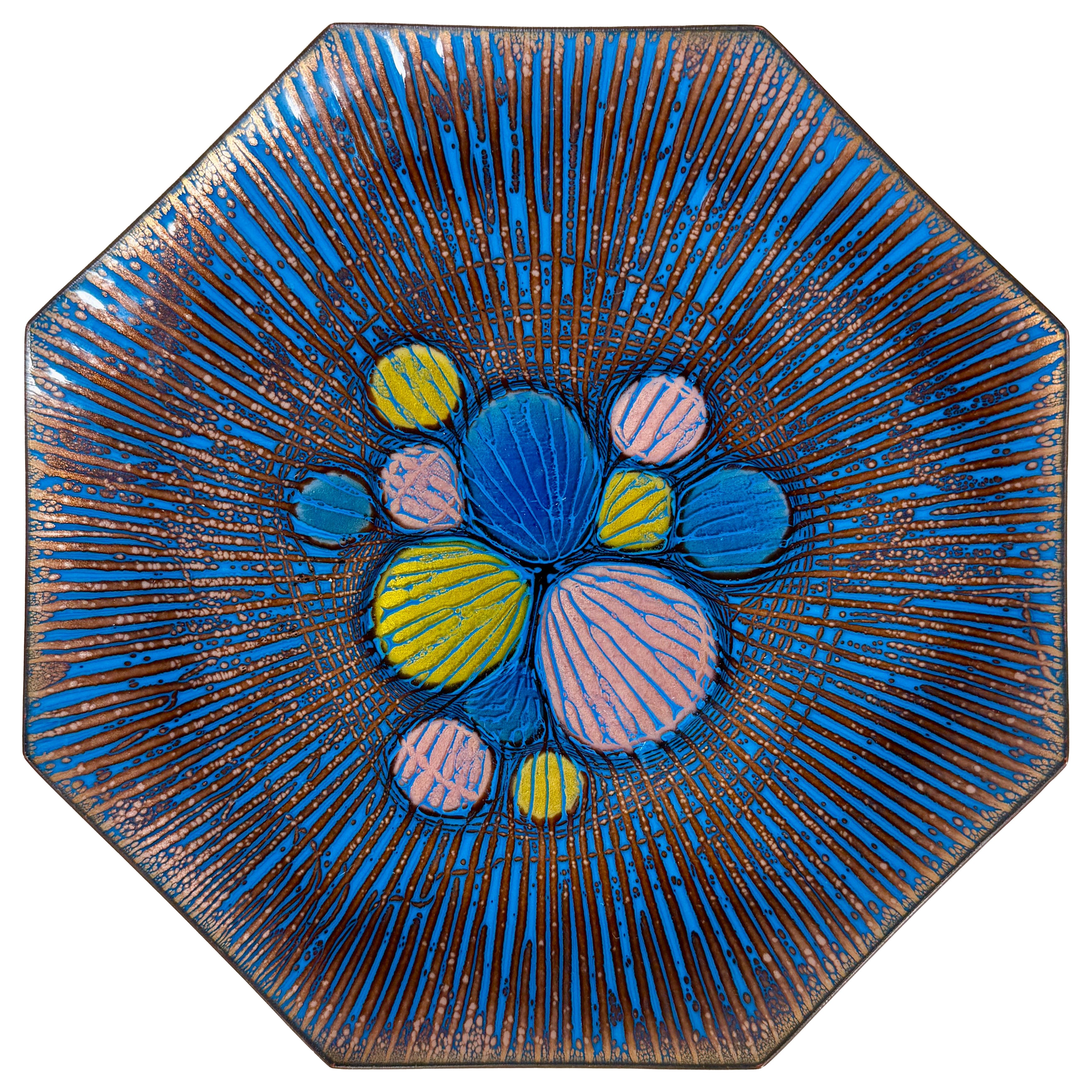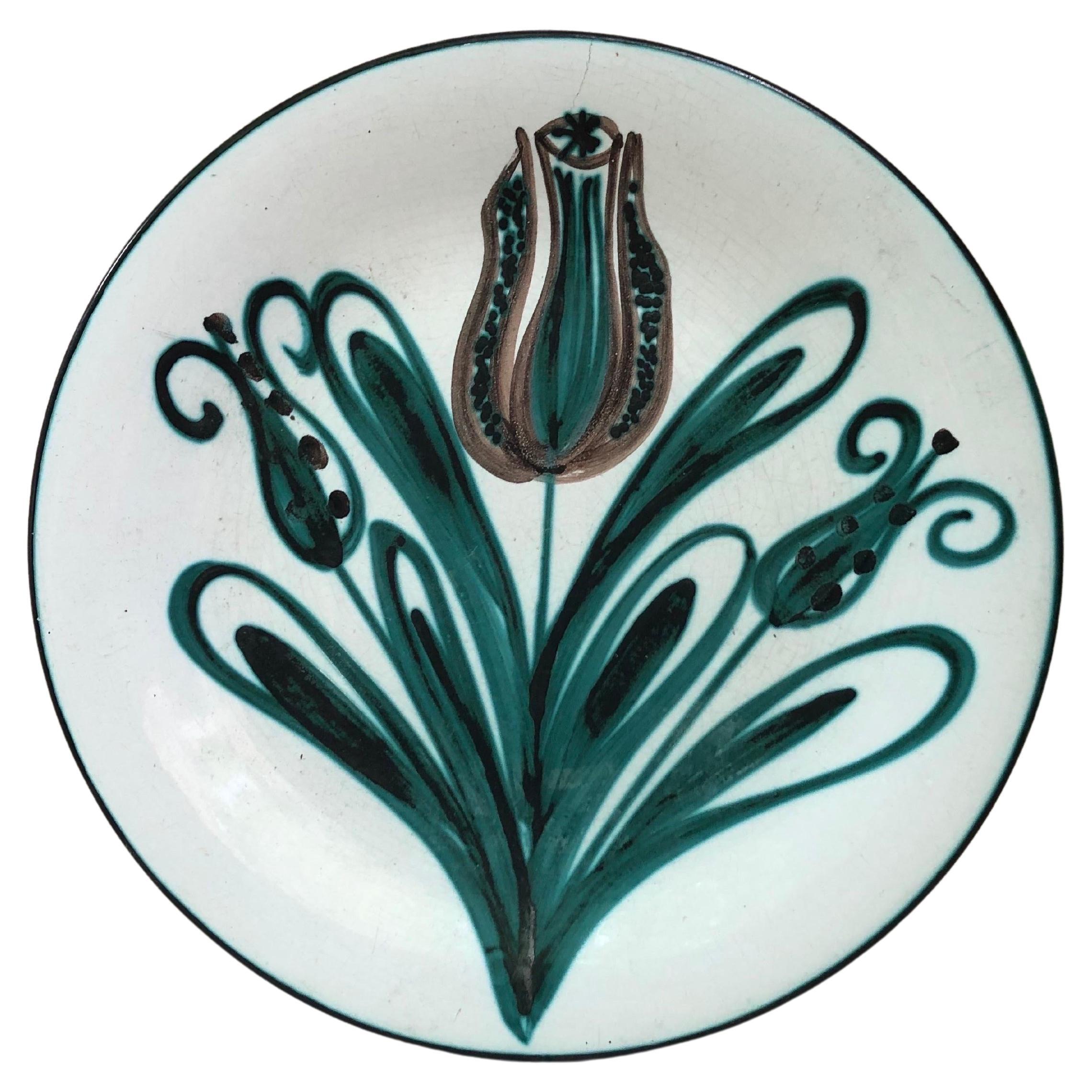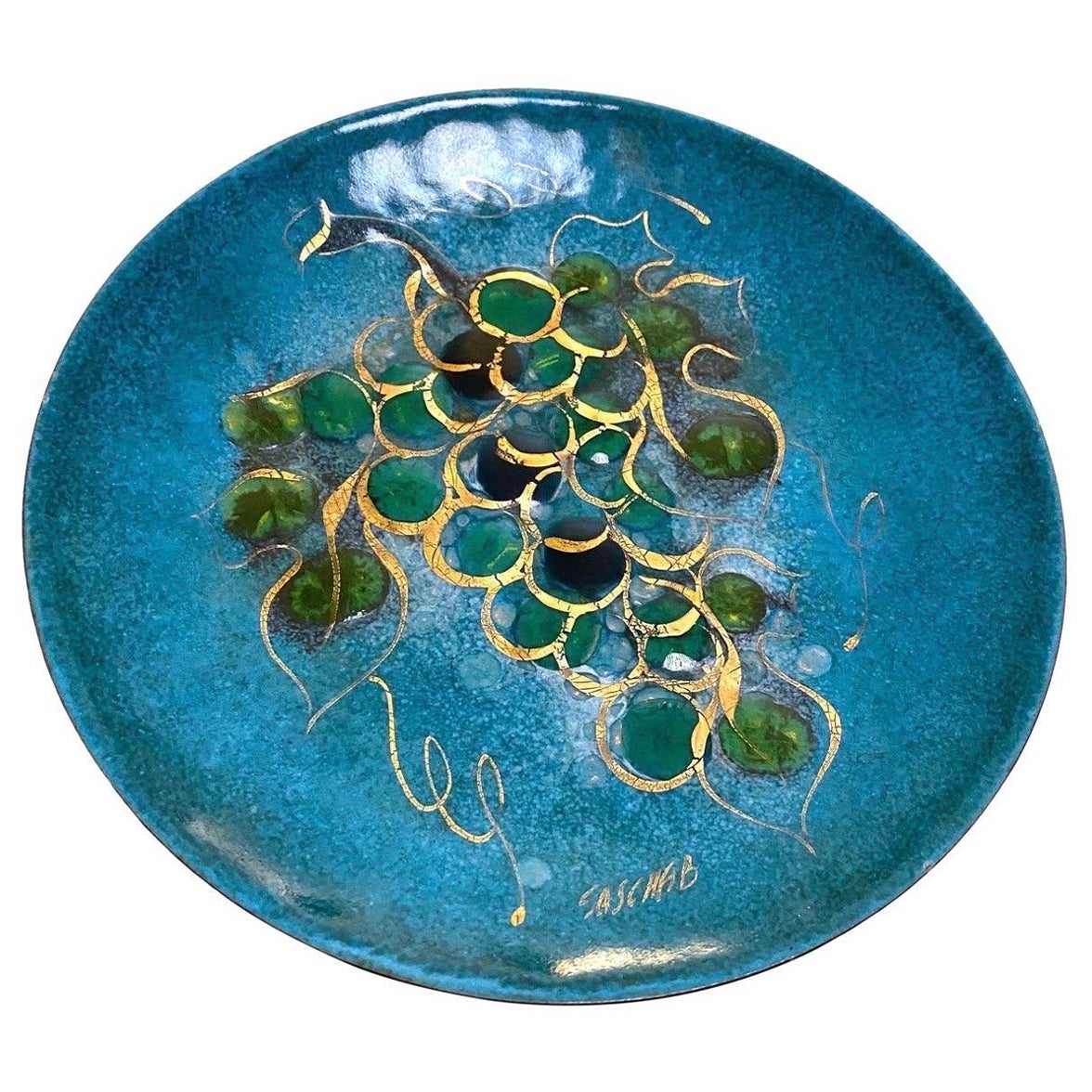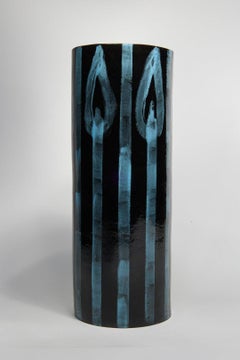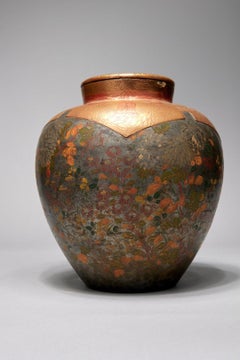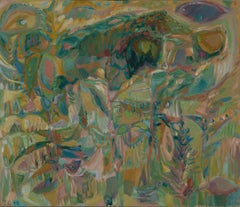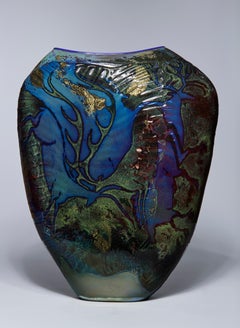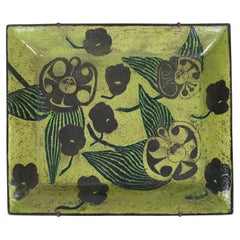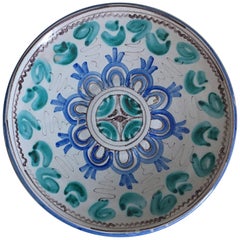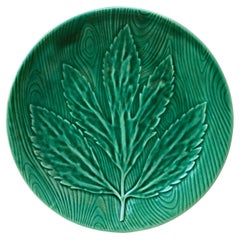Items Similar to Botanical Motifs, Mid-Century Decorative Blue + Green Plate, Cleveland School
Want more images or videos?
Request additional images or videos from the seller
1 of 3
Kenneth BatesBotanical Motifs, Mid-Century Decorative Blue + Green Plate, Cleveland School1953
1953
$2,500
£1,896.09
€2,177.74
CA$3,581.60
A$3,943.07
CHF 2,015.31
MX$47,061.64
NOK 25,659.24
SEK 24,011.33
DKK 16,266.42
About the Item
Kenneth Bates (American, 1904-1994)
Botanical Motifs, 1953
Enamel
Signed and dated on bottom
9 inches
Described in a 1967 issue of Ceramics Monthly as the ‘Dean of American Enamelists,’ Kenneth Bates was a highly versatile artist, a prolific writer, a skilled teacher, and an indomitable champion of enameling. Bates was born in North Scituate, Massachusetts in 1904. From 1922 to 1926 he studied painting at the Massachusetts School of Art where he was awarded his bachelor of science degree in 1926. In 1924 he enrolled in his first class in enameling with Laurin Hoven Martin, one of the leading enamelists in this country in the first quarter of the twentieth century. Bates’s superb training with Martin – as well as his exposure, through him, to Arts and Crafts philosophies – informed his work and his artistic beliefs throughout the remainder of his life.In 1927, Bates was invited by the Cleveland School of Art to move to Ohio to teach design. He remained at that institution, influencing several generations of Cleveland-based artists, through his retirement in 1968.
Bates was an extraordinarily versatile artist with extensive knowledge of enameling technique, from cloisonné to plique-a-jour. While he explored a variety of subjects and themes in his work, he is best known for his ornamental plates, plaques, and vessels, decorated with images from nature, including plants, flowers, leaves, butterflies, and birds. Fundamentally he was a colorist whose palette featured a wide range of brilliant hues, often presented in startling and vibrant juxtapositions. He typically chose subjects such as flowers and sea life specifically for their visual allure, their optical dazzle. He also frequently incorporated paillons, small pieces of gold or silver foil, into his work to give it even greater visual appeal.
Mentor, leader, writer, and spokesperson for the field, Kenneth Bates had an immeasurable impact on enameling in this country in the period 1930 to 1980. His vision – essentially that of a colorist – influenced an entire generation of enamelists, and his dedication to technical exploration opened the field to new designs, new materials, and inventive new approaches to this venerable medium.
About the Seller
5.0
Platinum Seller
Premium sellers with a 4.7+ rating and 24-hour response times
Established in 1975
1stDibs seller since 2022
39 sales on 1stDibs
Typical response time: <1 hour
- ShippingRetrieving quote...Shipping from: Beachwood, OH
- Return Policy
Authenticity Guarantee
In the unlikely event there’s an issue with an item’s authenticity, contact us within 1 year for a full refund. DetailsMoney-Back Guarantee
If your item is not as described, is damaged in transit, or does not arrive, contact us within 7 days for a full refund. Details24-Hour Cancellation
You have a 24-hour grace period in which to reconsider your purchase, with no questions asked.Vetted Professional Sellers
Our world-class sellers must adhere to strict standards for service and quality, maintaining the integrity of our listings.Price-Match Guarantee
If you find that a seller listed the same item for a lower price elsewhere, we’ll match it.Trusted Global Delivery
Our best-in-class carrier network provides specialized shipping options worldwide, including custom delivery.More From This Seller
View AllLarge 20th Century Ceramic Vase w/ Flowers, French Artist
By Roger Capron
Located in Beachwood, OH
Roger Capron (French, 1922-2006)
Vase
Ceramic
Signed on bottom
15.75 x 6 inches
French ceramist Roger Capron was born in Vincennes in 1922. He studied at Paris’s School of Applied A...
Category
Late 20th Century More Art
Materials
Ceramic
$2,400 Sale Price
20% Off
Late 19th Century Chinese Decorated Metal Covered Ginger Jar in Japanese Style
Located in Beachwood, OH
Late 19th Century Chinese
Decorated Metal Covered Ginger Jar in the Japanese Style
Labeled on bottom Ralph M. Chait Galleries, New York
9 x 7.5 x 7.5 inches
Ginger jars were used...
Category
Late 19th Century More Art
Materials
Metal
Abstract Landscape, large mid-century green painting, COBRA art movement
Located in Beachwood, OH
Erik Ortvad (Danish, 1917 - 2008)
Abstract Landscape, 1946
Oil on canvas
Signed and dated lower right
32 X 37.5 inches
35 x 40.5 inches, framed
Born in 1917 in Copenhagen, Erik Ortvad was a surrealist painter and a founding member of the COBRA art...
Category
1940s Abstract Impressionist Abstract Paintings
Materials
Oil
Petroglyph Vessel, Large Contemporary Figural Glass Blown Form
By William Morris (b. 1957)
Located in Beachwood, OH
William Morris (American, b. 1957)
Petroglyph Vessel
Blown glass
Signed on bottom
26 x 20 x 7 inches
William Morris was born in Carmel, California in 1957. He is an American glass a...
Category
Late 20th Century Figurative Sculptures
Materials
Blown Glass
Abstract expressionist blue, black & green mid-century geometric painting
By Richard Andres
Located in Beachwood, OH
Richard Andres (American, 1927-2013)
Untitled, c. 1949
oil on canvas
18 x 32 inches
Richard Andres was born in Buffalo, New York in 1927. A graduate of the Cleveland Institute of Art in 1950, he was immediately drafted and served for two years in the army as a mural painter. He received his Master of Arts from Kent State in 1961. A frequent exhibitor at galleries and museums and winner of multiple May Show prizes, Andres taught art in the Cleveland Public Schools for 28 years, as well as teaching the University of Buffalo, the Cleveland Institute of Art and the Western Reserve University.
Very little in Richard Andres’ childhood would have predicted his love of classical music, mid-century-modern architecture and certainly not his lifelong passion for art and in particular abstract art. Richard’s father, Raymond, had no more than a third-grade education, and his mother, Clara, was one of thirteen children – only three of whom lived into adulthood and none of whom attended high school.
They lived, when Richard was a boy, in a dingy area of Buffalo, NY in a walk-up apartment situated above a tavern. Raymond and Clara supplemented the income from their factory jobs in the bar downstairs with Raymond playing ragtime on the piano and Clara serving drinks. This often left Richard and his two older brothers at home alone to fend for themselves. The two older boys, Raymond and Russell, were - unlike Richard- rather rough and tumble and entertained themselves with stickball, boxing and the like. Richard, on the other hand, from a very young age liked to draw, or better yet even, to paint with the small set of watercolors he received for Christmas one year. Paper, however, at the height of the depression, was hard to come by. Luckily, Clara used paper doilies as decoration for the apartment and Richard would contentedly paint and then cut up doilies, gluing the pieces together to create collages.
At eight-years-old, he discovered the Albright-Knox Museum (then known as the Albright Art Gallery) and spent several hours a week there studying the paintings. He was particularly fond of Charles Burchfield‘s landscapes, enamored with their ‘messiness’ and thinking that they somehow captured more ‘feeling’ than works he was previously familiar with. For his tenth Christmas, he asked for and received a ‘how-to’ paint book by Elliot O’Hare. Through this self-teaching, he assembled the portfolio needed for acceptance to Buffalo Technical High School where he studied Advertising Arts. In his Junior year, he was encouraged to enter a watercolor painting, “Two Barns,” in the national 1944-45 Ingersoll Art Award Contest and was one of twelve grand prize winners – each one winning one hundred dollars. More importantly the painting was exhibited at the Carnegie Institute Galleries, which resulted in his winning a national scholarship to the Cleveland School of Art (The Cleveland Art Institute).
He flourished at the art school under the tutelage of faculty members such as Carl Gaertner, as well as that of visiting artists such as William Sommer and Henry George Keller. He would say in later years that Gaertner, in particular, influenced his attitude toward life as well as art. “Gaertner,” Andres said, “believed that there was no need to be a ‘tortured artist’, that an artist should rather enjoy beauty, family, and life in general.” Free to spend his days as he chose, he wandered the Cleveland Art Museum for most of the hours he was not attending classes or painting; the remaining time was spent drinking coffee at a local hangout with art school friends – which is where he met fellow Henry Keller scholarship winner, Avis Johnson. Richard was immediately smitten with Avis, but being rather shy, it took him the entire summer of 1948 to build up his courage to ask her out. Over that summer he ‘thought about Avis’ and worked in a diner to save money. He also used the hundred-dollar prize money won in High School to visit the first Max Beckmann retrospective in the United States at the City Art Museum in St. Louis. Over a half century later he spoke of that exhibit with a reverence usually reserved for spiritual matters, “I walked in and it was like nothing I had ever seen before... the color...It just glowed.”
Returning to campus in the Fall, the first thing he did was go to the coffee shop in hopes of finding Avis. He did, and she, upon seeing him, realized that she was also smitten with him. They quickly became known as ‘the couple’ on campus, and a year later, with Richard being drafted for the Korean war, they were quickly married by a Justice of the Peace, celebrating after with family at Avis’s Cleveland home. As a gift, faculty member John Paul Miller designed and made the simple gold wedding ring Avis wore for their 65 years of marriage. During those 65 years neither wavered in their mutual love, nor in the respect they shared for one another’s art.
The couple lived in a converted chicken coop in Missouri while Richard was in boot camp. At the camp, he would volunteer for any job offered and one of those jobs ended up being painting road signs. His commander noticed how quickly and neatly he worked and gave him more painting work to do - eventually recommending him for a position painting murals for Army offices in Panama. Until her dying day, Avis remained angry that “The army got to keep those fabulous murals and they probably didn’t even know how wonderful they were.” In Panama, their first son, Mark, was born. After Richard’s discharge in 1953, they moved back to the Cleveland area and used the GI bill to attend Kent State gaining his BA in education. The small family then moved briefly to Buffalo, where Richard taught at the Albright Art School and the University of Buffalo – and their second son, Peter, was born. Richard had exhibited work in the Cleveland May Show and the Butler Art Museum during his art school years, and during the years in Buffalo, his work was exhibited at the gallery he had so loved as a child, the Albright Art Gallery.
In 1956, the family moved back to the Cleveland area and Richard began teaching art at Lincoln West High School during the day while working toward his MA in art at Kent State in the evenings. Avis and Richard, with the help of an architect, designed their first home - a saltbox style house in Hudson, Ohio, and in 1958, their third son, Max (after Max Beckmann) was born. Richard enjoyed the consistency of teaching high school as well as the time it gave him to paint on the weekends and during the summer months. In 1961, he received his MA and his daughter, Claire, was born. With a fourth child, the house was much too small, and Avis and Richard began designing their second home. An admirer of MCM architecture, Richard’s favorite example of the style was the Farnsworth house – he often spoke of how the concepts behind this architectural style, particularly that of Mies van der Rohe, influenced his painting.
Andres described himself as a 1950’s...
Category
1940s Abstract Expressionist Abstract Paintings
Materials
Oil
Monumental Chinese Famille Rose Medallion Vase, 20th Century
Located in Beachwood, OH
Monumental Chinese Famille Rose Medallion Vase, 20th Century
Porcelain
36 x 18 inches
Famille rose is an 18th century Chinese porcelain, characterized by its pink-colored enamel.
Category
20th Century More Art
Materials
Porcelain
You May Also Like
Large Surreal Green Garden Birger Kaipiainen Faience Wall Relief Rörstrand 1950s
By Birger Kaipiainen, Rörstrand
Located in Helsinki, FI
A rare and beautiful wall relief featuring hand-painted flowers & women, designed by Birger Kaipiainen for Rörstrand and manufactured in Sweden in the 1950s. Kaipiainen spent only 4 ...
Category
Vintage 1950s Swedish Scandinavian Modern Ceramics
Materials
Faience
Midcentury Blue and Green Ceramic Dish or Plate with Geometrical Motifs
Located in Miami, FL
20th century midcentury blue and green ceramic dish or plate.
Category
Mid-20th Century Spanish Mid-Century Modern Platters and Serveware
Materials
Ceramic
Green Majolica Leaf Plate Gien circa 1950
By Gien
Located in Austin, TX
Green Majolica Leaf Plate signed Gien Primefleur Circa 1950.
Category
Vintage 1950s French Mid-Century Modern Dinner Plates
Materials
Ceramic
$112 Sale Price / item
20% Off
Vintage Annemarie Davidson Enamel Plate – Mid-Century Modern Studio Art on Coppe
By Annemarie Davidson
Located in San Diego, CA
This striking octagonal enamel plate by Annamarie Davidson exemplifies the bold innovation and craftsmanship of mid-century modern design. Radiating with dynamic energy, the plate features a mesmerizing composition of raised circular forms in vibrant blues, soft lavenders, lemon yellows, and aquas. These biomorphic shapes pulse from the center outward, dramatically set against a richly textured field of radiating copper-brown lines over a vivid electric blue enamel ground. The plate’s dimensionality and meticulous surface treatment create a luminous, almost cosmic effect—an exceptional example of Davidson’s signature style.
Annamarie Davidson was a pivotal figure in the American studio enamel movement during the mid-20th century. Working primarily in the 1950s and 60s, Davidson was part of a wave of California-based artists who elevated enameling from a craft tradition to a fine art form. Her work is celebrated for its rich color palettes, playful abstraction, and masterful command of vitreous enamel on copper. Each piece is not only a testament to her technical skill but also to her ability to harmonize modernist aesthetics with expressive, organic forms.
As mid-century modern design sought to integrate art into everyday life, Davidson's enamelware—functional yet visually arresting—embodied that ethos perfectly. This plate is more than decorative; it is a radiant artifact from a revolutionary design era, and a fine addition to any collection of mid-century art, ceramics, or design.
Add a rare and radiant piece of Mid-Century Modern art to your collection with this vintage enamel plate...
Category
Vintage 1960s American Mid-Century Modern Planters, Cachepots and Jardin...
Materials
Copper, Enamel
Large Mid-Century Tulip Platter Robert Picault Vallauris
By Robert Picault
Located in Austin, TX
Large Mid-Century Tulip Platter signed Robert Picault Vallauris.
Diameter / 11.4 inches.
Category
Vintage 1950s French Mid-Century Modern Platters and Serveware
Materials
Ceramic
$720 Sale Price
20% Off
Mid-Century Sascha Brastoff Signed Enamel Plate
Located in Charleston, SC
Enameled Plate Wall Decor with Grapes motif. The enamel on Copper dish features luscious shades of teal or aqua blue with green grapes and gold overgl...
Category
Vintage 1950s American Mid-Century Modern Decorative Bowls
Materials
Copper, Enamel
